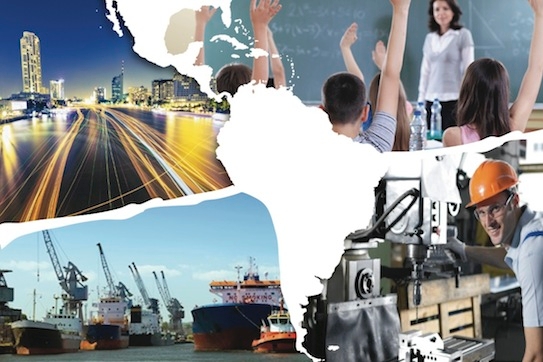The nations of Latin America face an increasingly difficult challenge as they look to continue their recovery from the worst effects of the global COVID-19 pandemic. Numerous factors worldwide could pose serious problems for economies in the Latin American region, both this year and beyond. In fact, increasing inflation in some of the world’s largest economies and higher food and energy prices resulting from the ongoing Russia/Ukraine conflict have fueled concerns that the region is facing a potential recession.
Potential Trouble Ahead for Latin American Economies
The United Nations’ Economic Commission for Latin America and the Caribbean (ECLAC) recorded 2022 regional growth of 3.2%, which was better than earlier forecasts for the region. That was the good news. The bad news, however, came in ECLAC’s outlook for 2023. Only 1.4% growth is expected in the region, a significant slowdown in economic improvement.
The factors influencing this slowing growth are both internal to the region as well as global, meaning that while the Latin American nations have some degree of control of their immediate economic destiny, they are also at the mercy of international developments that are beyond their sphere of influence.
Despite the end of the worldwide pandemic, supply chain issues persist in many sectors as the world attempts to catch up on lost time.
Latin American nations tend to have a high level of national debt. This limits the flexibility of governments when it comes to public spending. Rising interest rates in reaction to inflation worldwide could lead to even higher debt. The possibility of currency depreciation is a real fear that could combine with rising inflation to create serious problems in the year ahead.
Latin America’s largest trading partners are experiencing problems of their own. China is the largest destination for Latin exports, while the United States is the overall largest trading partner for the region. Rising inflation and lower commodity prices in both economic superpowers threaten growth and limit public spending options.
The combination of these factors is forcing Latin governments to take a risk adverse approach to their economic plans. The potential for serious financial disaster looms large for any Latin nations taking major risks with their economies. This more conservative outlook may help to avoid any major downturns, but it also limits growth potential and could further stifle the post-pandemic regional recovery.
Consumer spending has fallen amid fears of recession and the lingering effects of inflation. Another factor contributing to lower consumer confidence is the lack of job creation throughout the region. Jobs opportunities are not currently meeting the demand for work, especially among the young, who are typically the greatest consumers.
Other Concerns and Potential Positives
The pandemic did not hit all social classes equally in Latin American. Poorer workers whose employment relied upon in-person interactions suffered disproportionately from the lockdowns and shutdowns. Poverty grew and continues to be a major problem throughout the region. The middle classes also saw their standard of living decline, and with recent inflation the situation has grown worse. Public pressure is on regional governments to continue to spend to alleviate these adverse economic conditions, but the aforementioned issues are limiting public spending options. This, in turn, is feeding discontent and social tension, putting many Latin governments in a very difficult position.
Latin American governments can take positive action to get their financial situation under control and stabilize their economies. To maintain social stability, regional governments need to continue to expand their efforts to help the poorest people to weather the current economic difficulties. Without a serious commitment to increasing the safety net for the poor, tension will continue to grow.
Reducing public debt is another necessary action, and the simplest way to do this is by increasing taxes to make sure the rich and large corporations pay their fair share. This can help to restore public confidence in government, which has been lacking since the pandemic-induced restrictions and their devastating economic effects. Public perception of government has also been hurt by corruption scandals that must be dealt with fairly and openly, to show the middle and lower classes that everyone will be treated equally under the law.
Central banks need to take all available measures to reduce inflation. Rising prices put undue pressure on the poorest people, especially when necessities like food become unaffordable. Many of the reasons for rising inflation come from worldwide trends, and are thus out of the control of Latin American nations, but governments throughout the region can take positive action to lessen the effects on the most vulnerable sectors of their population.
Latin America faces many challenges in the near future. The most daunting of these are to increase the growth rate and stabilize their economies. The prospects for doing so are not necessarily bright, but how the region responds to their current predicament will shape their longer-term future.

